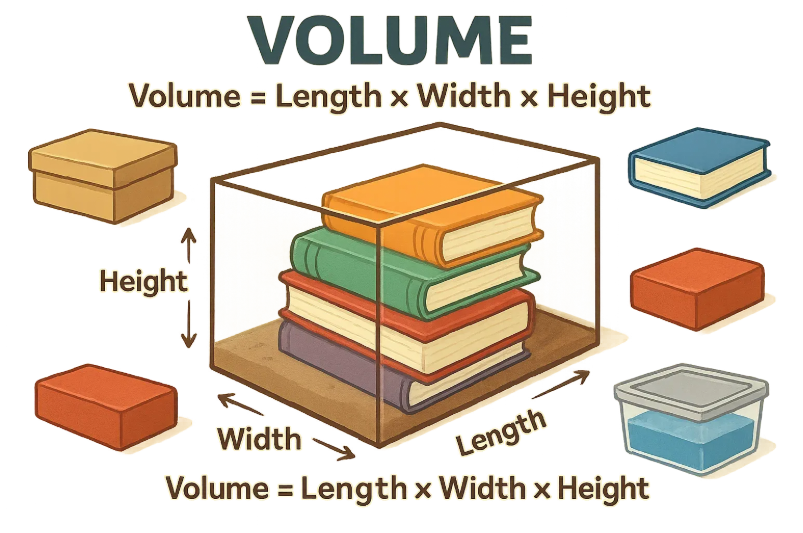What Is a Rectangular Prism (Box) Volume?
If you’ve ever packed a box, measured furniture, or calculated how much soil fits in a raised garden bed, you’ve already been thinking in volumes—specifically, rectangular prism volume.
A rectangular prism, a box or cuboid, is a three-dimensional shape with six rectangular faces, all meeting at right angles. It’s one of the most common shapes we encounter in daily life—think shoeboxes, storage containers, books, or bricks.
The volume of a rectangular prism tells us how much space it takes up—on the inside. It’s measured in cubic units, like cubic inches (in³), cubic feet (ft³), or cubic meters (m³), depending on what you're measuring. If you’re filling a box with sand, water, or products, volume tells you exactly how much you can fit.
Try out Sphere Volume Calculator
How to Calculate Rectangular Prism (Box) Volume
Calculating the volume of a rectangular prism (or box) is one of those math skills that sounds more intimidating than it is. Once you understand the formula and how to apply it, you’ll wonder why it ever seemed confusing in the first place.
Let’s get right to it.
The Simple Formula
To calculate the volume of a rectangular prism, use this straightforward formula:
Volume = Length × Width × Height
That’s it. Just three numbers multiplied together.
Each of these dimensions should be measured using the same unit—inches, feet, centimeters, or whatever is appropriate for your situation. If you mix units (like inches and feet), the answer won’t make sense until you convert everything to match.
Say you have a cardboard box that’s:
-
Length = 24 inches -
Width = 12 inches -
Height = 10 inches
Plug those into the formula: Volume = 24 × 12 × 10 = 2,880 cubic inches
That means this box can hold 2,880 cubic inches of material, air, or anything you’re trying to fit inside.
Try out Hemisphere Volume Calculator
The Box That Revolutionized Shipping

Did you know the humble rectangular box helped spark the e-commerce boom?
In the early 2000s, companies like Amazon began optimizing packaging by standardizing rectangular box sizes to make shipping faster, cheaper, and more efficient. By using consistent rectangular prism volumes, they could perfectly pack delivery trucks, reduce wasted space, and even speed up warehouse automation.
Why rectangular prisms? Because they:
-
Stack cleanly (no gaps)
-
Maximize space without weird corners
-
Are easy to measure and predict using volume
This isn’t just logistics—it’s math at scale. A properly sized box saves millions in shipping and fuel costs every year. Even tiny improvements in box volume calculations ripple out across the globe.
In short: the math behind rectangular prism volume doesn’t just help you fit shoes in a suitcase—it literally powers modern commerce.
Check out Math section to solve math quick and easy


